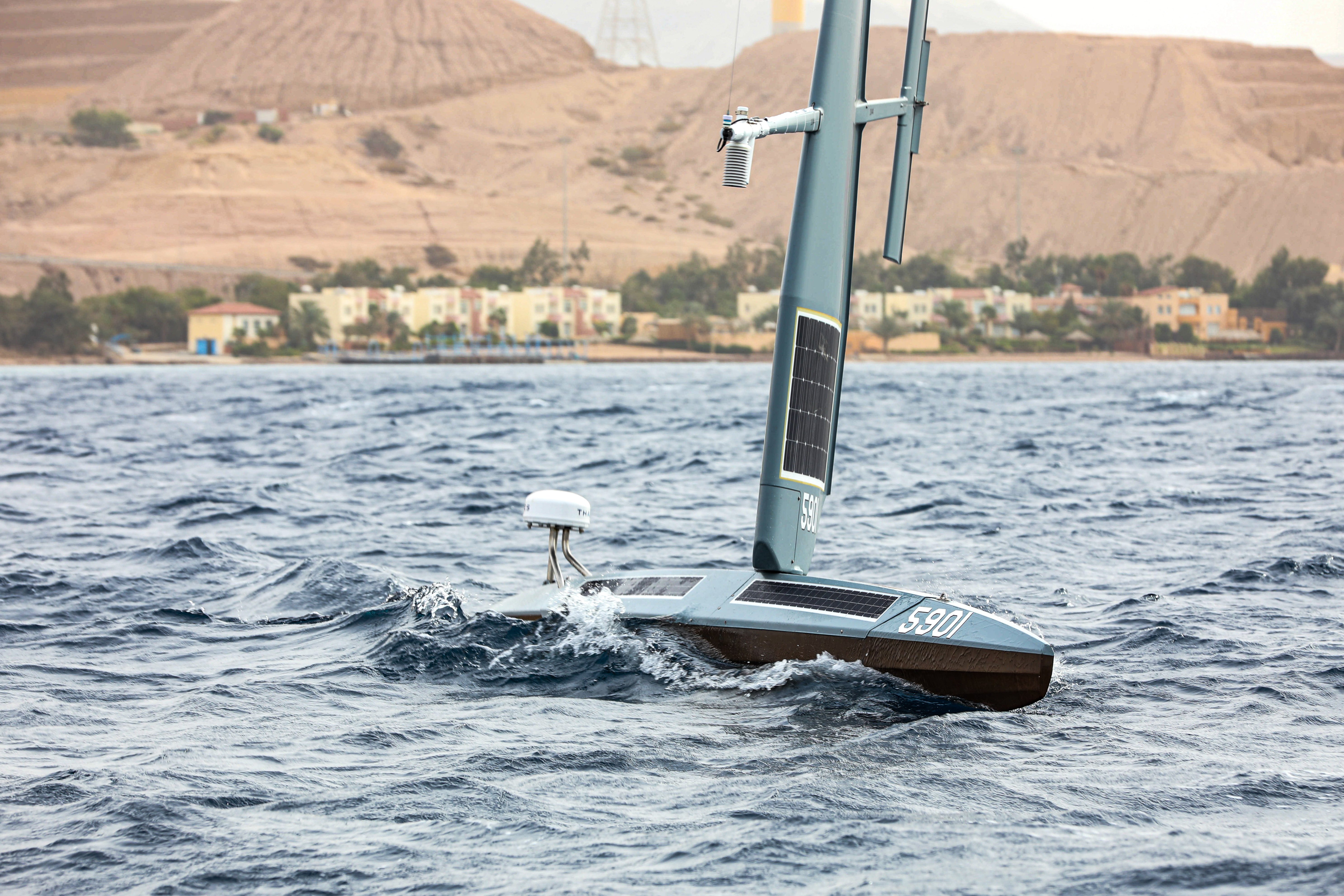
The U.S. Navy is emphasizing unmanned surface ships in its testbed effort for new platforms operating in U.S. Central Command, the commander of U.S. 5th Fleet said on Friday.
Starting this month, the International Maritime Exercise 22 will build on a special unmanned group that has been operating in 5th Fleet since September, Vice Adm. Brad Cooper said.
“Sixty nations [are] participating. Pretty remarkable. Ten of those nations are bringing unmanned platforms. It’ll be the largest unmanned exercise in the world,” Cooper, the commander of 5th Fleet, said at an event co-hosted by the Center for Strategic and International Studies and the U.S. Naval Institute.
Task Force 59, created last year to help the Navy expand its unmanned systems testing across domains, quickly evolved into working with regional partners – first with Bahrain, and then Jordan.
“We’ve got two hubs today, one out of Bahrain. We’ve worked with the Bahrainis, both unilaterally and bilaterally. Another hub in Jordan, again, unilaterally and bilaterally. And we’re really resetting benchmarks of what we thought was possible,” Cooper said. “I’ll give you an example. The drones that we have operating out of Aqaba have been at sea for 33 straight days – really redefining what persistence means in the maritime environment.”
U.S. 5th Fleet is using commercial unmanned surface systems that include the wind-powered, 23-foot-long Saildrone Explorer that has operated out of Jordan and MARTAC’s Mantas T12 USV that has operated from Bahrain.
The task force is serving as another testbed for unmanned systems so the Navy can experiment with the concept of operations and determine practical ways to employ the platforms.
“We’re taking off-the-shelf emerging technology in unmanned, coupling with artificial intelligence and machine learning, in really moving at pace to bring new capabilities to the region. I think in 2022 we’re going to see continued efforts in this regard into the operational realm and impacting operations. It will be exciting,” Cooper said.
IMX 22 will be designed to verify concepts for unmanned surface vehicles.
“The pace that we’ve been able to move at is going to result in IMX validating about 14 different concepts of operation imaginable a few months ago and then shifting into the more operational mode in the future,” Cooper said.
Ahead of standing up Task Force 59, the Navy assembled a group of military and industry experts to craft the underlying process.
“We brought the world’s leading experts, not just inside the military, but predominantly the private sector on unmanned and artificial intelligence and machine learning. Boy that really postured us for success,” Cooper said.
“We came out of that in a much better position and greater trajectory, and with some speed that we wouldn’t have anticipated. That group has largely stayed intact, which has really helped us propel. So these are, when you bring that level of talent together, each and every day, and the resourcing and the talent, you’re going to get a different outcome.”
Last year, when the Navy stood up the Task Force 59, Cooper said his command would build on its two decades of folding unmanned aerial vehicles into operations.
“We’re going to take today’s unmanned systems – which are largely in the air, as you know – we’ve had [MQ-1] Predators, and BAMS-D, airborne platforms out there for some time. What’s going to be different is they will be augmented with unmanned surface vessels,” Cooper told reporters in September. “We haven’t had them in the past. We have them now. It will be augmented with even more unmanned undersea vessels. We’ve had some in the past. We’re going to have a lot more in the future.”





